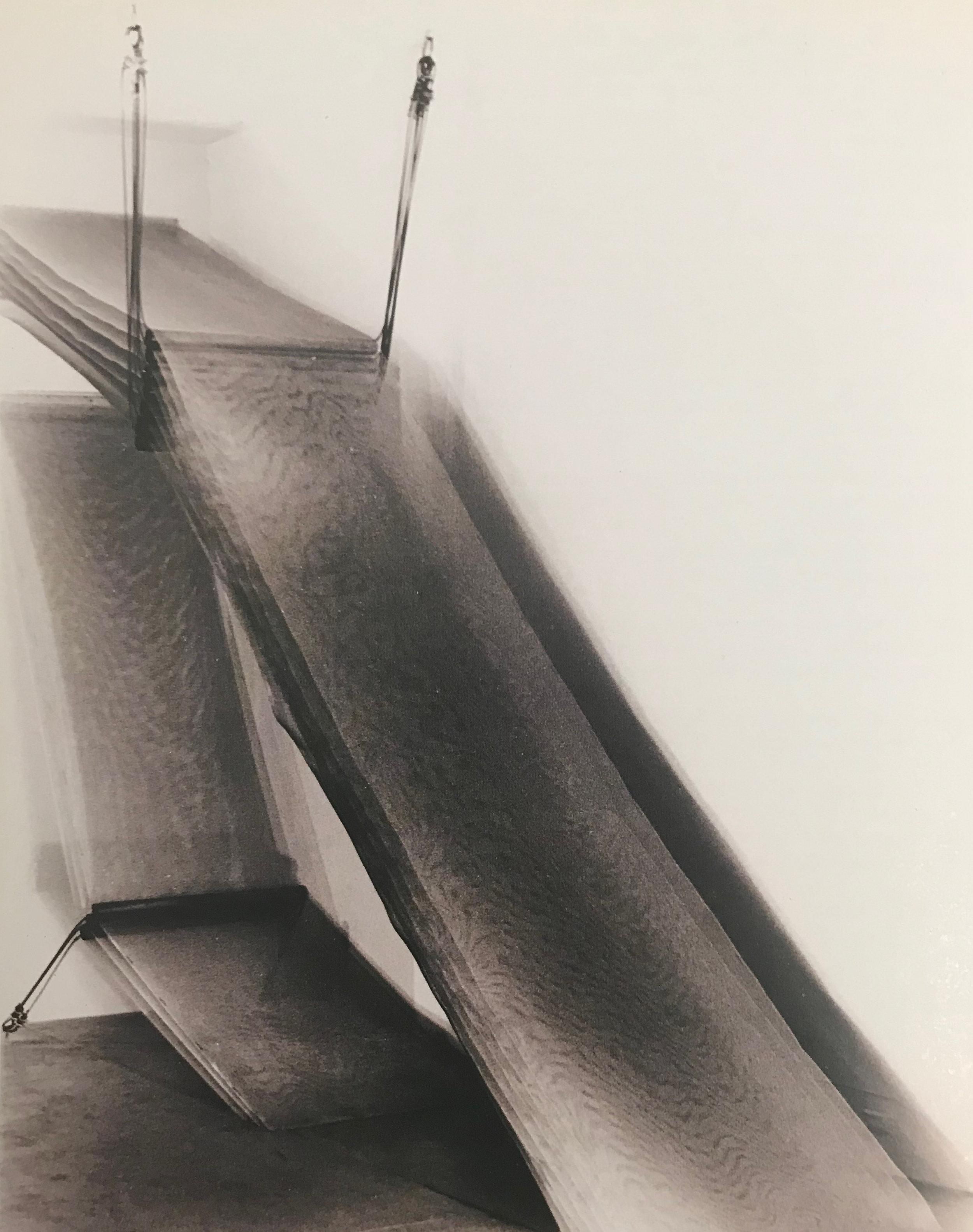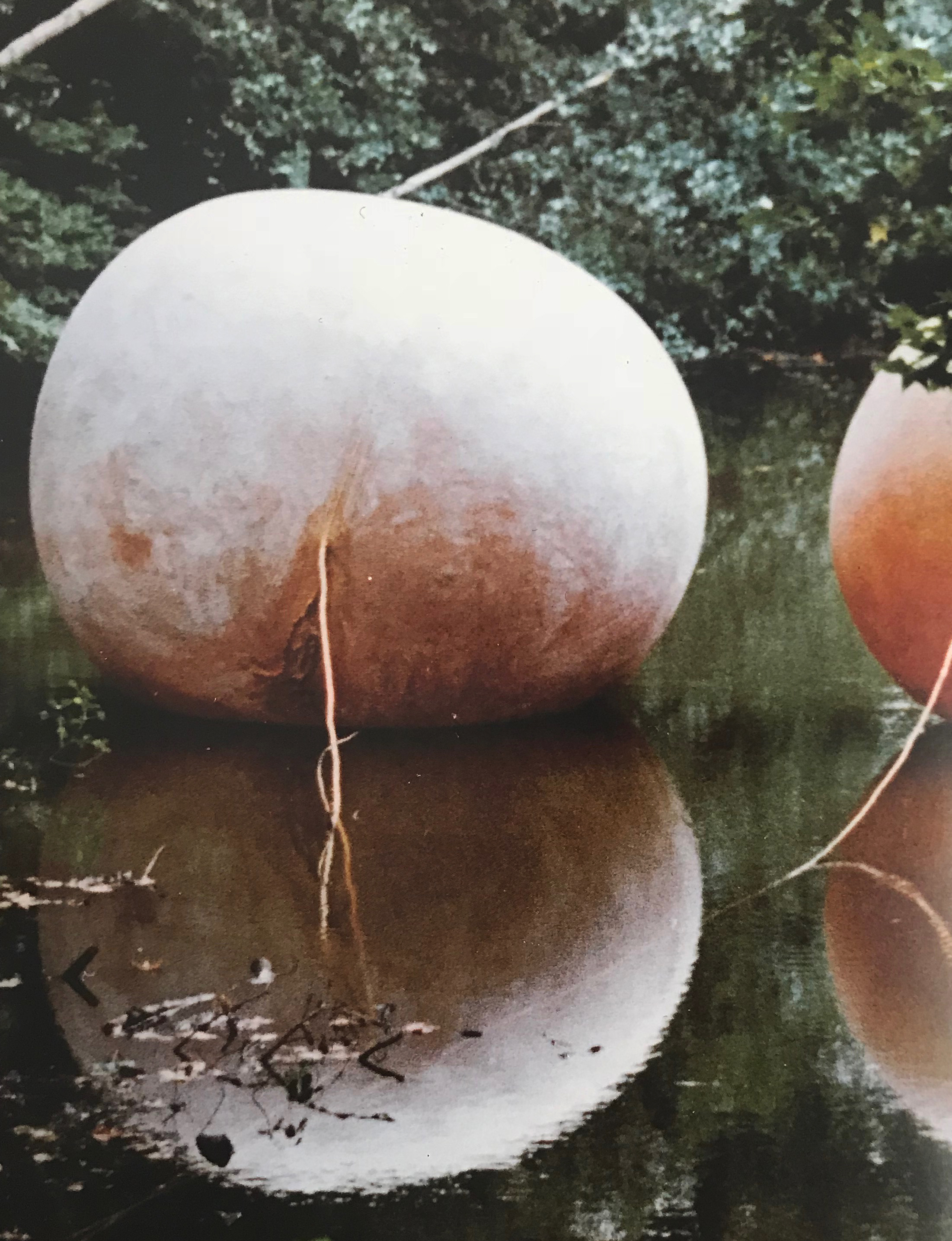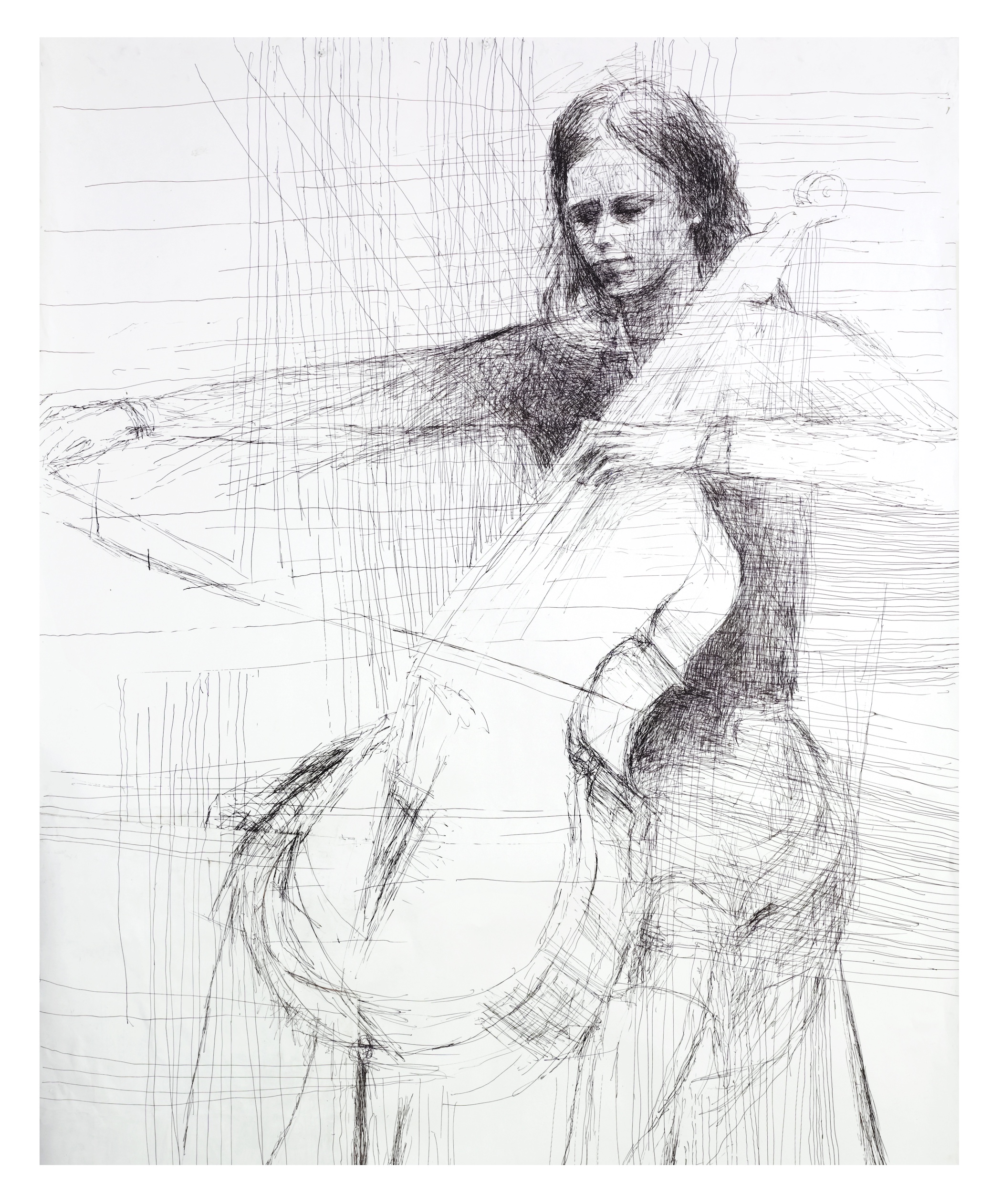“The three dimensional space I am concerned with is defined by the lines, weight, masses, and connecting areas of these materials, which are in turn liable to the static and dynamic intentions of the work… Seeing that soft materials are mobile by nature, I try to direct this mobility within particular variations or static states specified by movements relating to the mechanics of reaching these states.”
A New Yorker since birth, Louise Kramer live and worked in New York for the majority of her life. She attended Cooper Union, and later Hunter college where she received her Masters in Fine Art. She pursued further education at the University of Pennsylvania, Hofstra University, and the Brooklyn Museum Art School as well.
Taking advantage of the exploratory atmosphere of the women’s art movement, Louise Kramer innovated within a wide variety of mediums including sculpture, printmaking, drawing and installation. The Whitney Museum of American Art recognized some of her early efforts in printmaking; their 1976 show New Forms in Printmaking featured works on paper by the artist displaying images produced through the running of ink-soaked cloth through a press. At the same time, Kramer began working with sculpture, and became known for her severe, abstract forms that utilized materials of both extreme durability and fragility. Kramer’s venture into sculpture also signaled an engagement with more personal subject matter and a willingness to allow narrative to coexist with the formal studies she had been conducting previously.
At a group exhibition with A.I.R. in 1983, Kramer debuted a series of sculptures made as an homage to her mother; a unionist, dressmaker, socialist and organizer, who, the work suggests, provided the groundwork for the artist’s unique perspective regarding her materials. Said materials included pliable cardboard, alongside rigid steel, and deceptively soft brass and aluminum, all of which referenced the industrial nature of her mother’s work, while the flat planes and simple shapes evoked the dressmaker’s daily task of cutting up of fabrics to create patterns. This intense dissecting of her medium along with the weaving together of the personal and political exemplify the depth of artistry present in Kramer’s work that would define her career going forward.
Kramer had a number of solo and groups shows with A.I.R. Gallery, and often used it as a site to investigate spatial reasoning through manipulations of large sculpted masses, which would become another recurring theme in her work. Kramer has received several honors, notably a Nation Endowment For the Arts, and an invitation to act as a teacher - lecturer at the office of cultural development in Nassau County.
member 1972-95 | 1923-2020 | New York, NY
+ Exhibitions
+ Selected Press
+ Publications
+ Public Collections
+ Website






